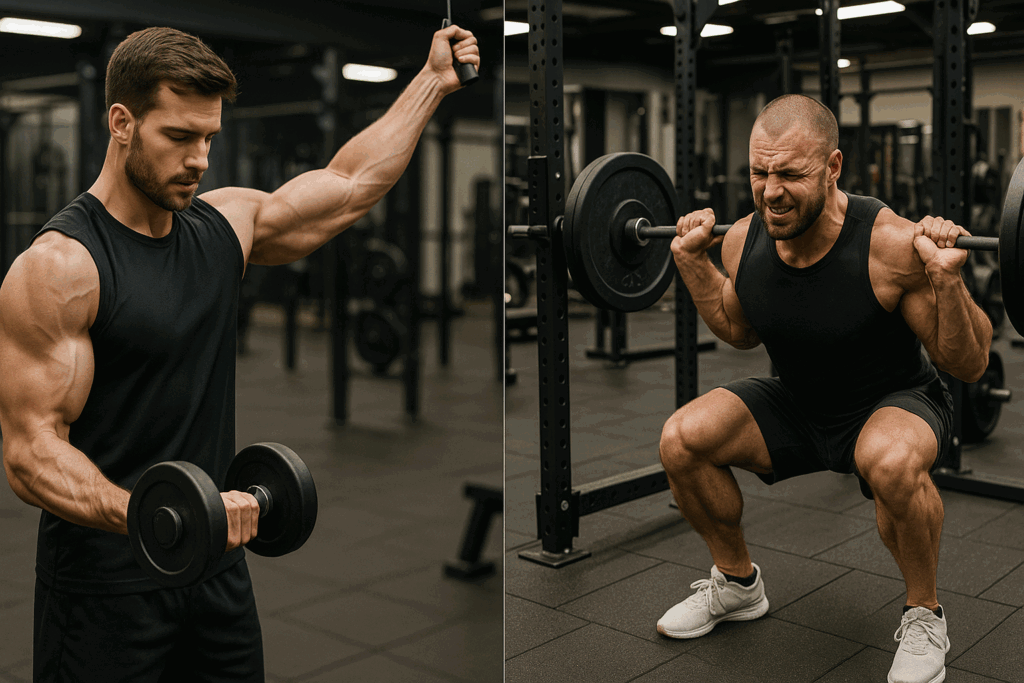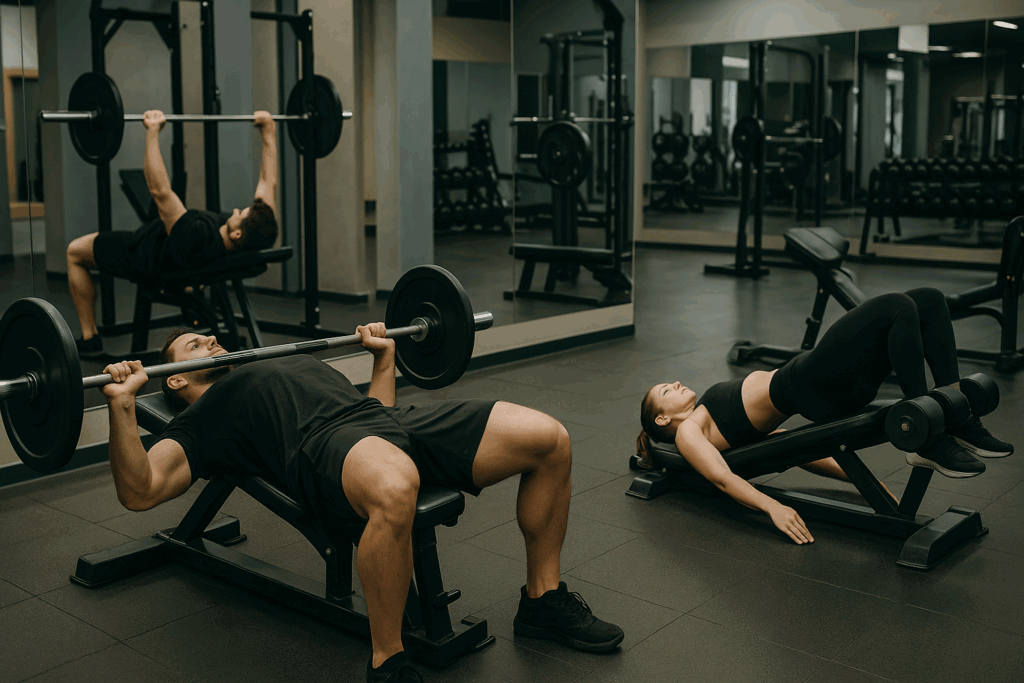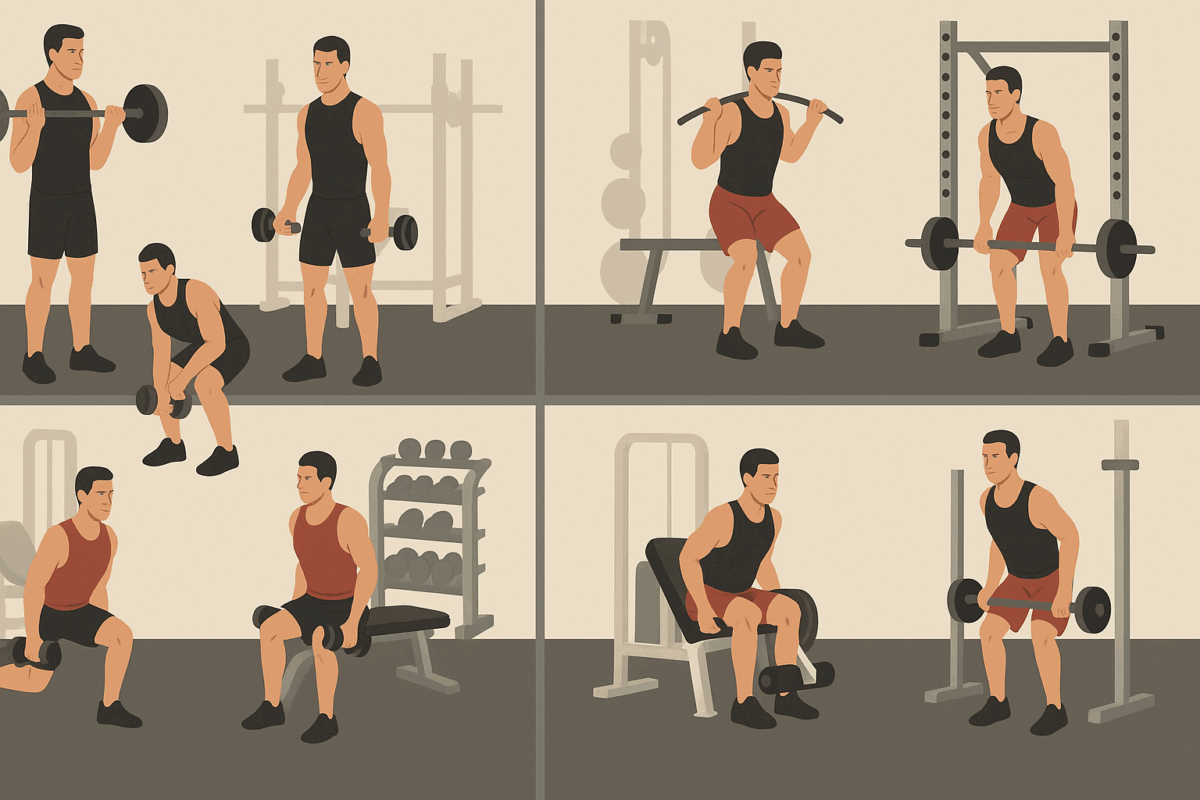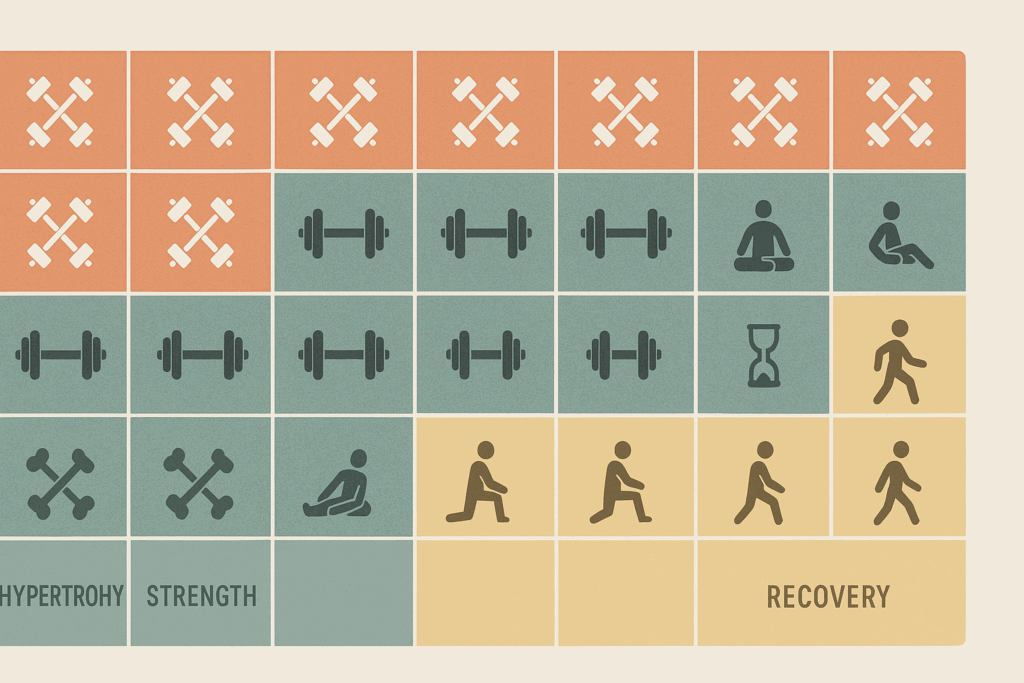Understanding the Origins and Evolution of Supersets in Resistance Training
Supersets, a staple of advanced lifting techniques, trace their origins back to early bodybuilding pioneers like Joe Weider, who championed them as a time-efficient strategy to enhance muscle stimulation and metabolic stress. At their core, supersets involve performing two exercises consecutively with minimal rest. These can either target the same muscle group (agonist supersets) or alternate opposing muscles (antagonist supersets). Over the decades, what began as a bodybuilding convenience has become a nuanced tool employed by strength coaches, physical therapists, and exercise scientists. The growing curiosity around hypertrophy optimization has led to increased interest in whether advanced techniques like supersets confer superior gains compared to traditional set structures. The question “are supersets good for hypertrophy” has become central in this exploration, prompting evidence-based inquiries into their role in muscular development.
From an evolutionary standpoint, the shift from isolated, volume-centric training to more metabolically challenging strategies reflects the growing emphasis on efficiency and systemic adaptation. Modern resistance training often integrates supersets to maximize training density, elevate cardiovascular demand, and stimulate complex hormonal cascades. However, despite their popularity, supersets remain a subject of debate—particularly regarding their efficacy in promoting muscle growth and strength without compromising recovery. To truly grasp their value, it’s essential to dissect not only their physiological mechanisms but also their practical applications across various training modalities.
You may also like: Powerful Science-Backed Insights: Do Supersets Build Muscle Effectively?
How Supersets Influence Muscle Physiology and Growth Pathways
The science of hypertrophy involves a tripartite model—mechanical tension, muscle damage, and metabolic stress. Supersets primarily amplify metabolic stress, which is increasingly recognized as a potent hypertrophic stimulus. When lifters perform supersets, particularly for the same muscle group, the accumulation of metabolic byproducts such as lactate and hydrogen ions contributes to cellular swelling and an increase in anabolic signaling pathways. This environment is conducive to the release of growth-promoting hormones like IGF-1 and testosterone, albeit transiently.
The rapid pace of supersets limits rest intervals, leading to sustained muscular contractions and greater time under tension—a key variable in hypertrophy training. This continuous load forces the muscle to recruit more motor units, especially as fatigue sets in, thereby engaging high-threshold motor units that are critical for muscle growth. Research suggests that when programmed appropriately, supersets can match or even surpass traditional resistance training in stimulating hypertrophy while reducing total workout time.
Nonetheless, this benefit must be weighed against potential drawbacks. For example, the accumulation of fatigue may impair performance on subsequent sets, particularly in compound lifts that demand high neuromuscular coordination. This is especially relevant in strength-focused phases, where mechanical efficiency and maximal force output are paramount. Therefore, while the question “are supersets good for muscle growth” can be answered affirmatively in many contexts, it is critical to evaluate the type of superset used, the exercise pairing, and the athlete’s overall training goals.

Are Supersets Good for Hypertrophy in All Muscle Groups?
The hypertrophic response to supersets is not uniformly distributed across all muscle groups. Larger, more complex muscle groups such as the quadriceps or pectorals may experience a different adaptation curve compared to smaller muscles like the biceps or calves. The effectiveness of supersets in inducing growth also depends on the type of exercises used. Isolation movements paired together—such as a bicep curl followed by a concentration curl—can effectively flood the target muscle with blood, enhancing cellular hydration and metabolic stress. This often translates to noticeable hypertrophy when consistently implemented over time.
In contrast, performing supersets with large compound lifts such as squats and deadlifts can present challenges. These exercises require significant central nervous system (CNS) involvement, and pairing them in a superset may lead to premature fatigue that compromises form and performance. This can attenuate the mechanical tension required for optimal hypertrophy and increase the risk of injury. For this reason, many advanced athletes reserve supersets for accessory movements or machine-based exercises that place less systemic stress on the body.
Moreover, the hypertrophic benefits of supersets may be more pronounced in intermediate to advanced lifters who have already adapted to traditional training schemes. For novices, the foundational principles of progressive overload and proper technique are more critical than manipulating training variables like supersets. Thus, while supersets can be good for hypertrophy, their utility is maximized when applied to specific contexts, muscle groups, and individual training histories.

Are Supersets Good for Hypertrophy When Training for Strength?
Integrating supersets into a strength-focused program presents both opportunities and limitations. Strength gains rely primarily on neural adaptations, including improved motor unit recruitment, firing rates, and synchronization. These adaptations are best supported by heavy loads, low repetitions, and full rest intervals—conditions that supersets inherently disrupt. Consequently, utilizing supersets with maximal or near-maximal loads may diminish performance and impair strength development.
However, strategic use of antagonist supersets—such as pairing bench press with barbell rows—can enhance training efficiency without significantly compromising performance. Research indicates that training opposing muscle groups in succession may reduce fatigue, improve bar velocity, and even enhance neural drive due to reciprocal inhibition. This makes antagonist supersets particularly valuable in time-constrained environments or in accessory work designed to complement the main lifts.
Furthermore, supersetting hypertrophy-focused accessory movements within a strength phase can support muscle mass maintenance, joint health, and movement balance. For example, pairing leg curls with glute bridges or lat pulldowns with face pulls allows athletes to address weak points and stabilize joints without detracting from heavy compound work. In this way, the nuanced application of supersets enables a harmonious blend of hypertrophy and strength within periodized programming.

Strategic Superset Variations for Optimizing Muscle Growth
There are several types of supersets, each with distinct implications for hypertrophy. The most common include agonist supersets (same muscle group), antagonist supersets (opposing muscle groups), and unrelated supersets (different body parts). Each variation elicits unique physiological responses, allowing for customized training experiences. Agonist supersets generate the most localized fatigue and metabolic stress, making them ideal for maximizing muscle pump and volume in a target area.
Antagonist supersets, on the other hand, allow one muscle group to recover while the other is working, facilitating higher overall training volume without drastically increasing workout duration. This method is particularly beneficial for full-body training splits or when recovery is prioritized. Unrelated supersets are often used for logistical efficiency—such as pairing calf raises with shoulder presses—to keep training intensity high and rest periods minimal.
For advanced trainees, incorporating pre-exhaustion or post-exhaustion supersets can further refine hypertrophic targeting. Pre-exhaustion involves performing an isolation exercise before a compound movement, thereby increasing the recruitment of the target muscle during the compound lift. Post-exhaustion flips this order, emphasizing volume and fatigue after mechanical loading. These nuanced variations ensure that the answer to “are supersets good for hypertrophy” is not only affirmative but also highly adaptable.

Are Supersets Good for Muscle Growth in Periodized Training Plans?
Periodization remains the gold standard for progressive resistance training, and supersets can play a vital role within this structure. In hypertrophy-specific mesocycles, supersets can be used to increase training density and overall volume without extending time in the gym. By manipulating rest periods, exercise pairings, and load, athletes can target various hypertrophic mechanisms across different phases of their program.
During strength or power phases, the use of supersets should be more selective. They are best employed in warm-up circuits or accessory work to maintain muscle mass and joint integrity. In deload weeks or recovery blocks, low-intensity supersets can keep blood flowing and promote active recovery without imposing high neurological demand.
Moreover, undulating periodization—where volume and intensity fluctuate weekly or even daily—can integrate supersets more flexibly. For instance, a lifter might use traditional sets on high-intensity days and supersets on volume-focused days to enhance metabolic stress and training variety. This strategic variability prevents plateaus, mitigates overuse injuries, and sustains motivation over long training cycles. When executed thoughtfully, supersets become a powerful tool in any well-constructed periodized plan aimed at both muscle growth and performance.

The Role of Supersets in Athletic Conditioning and Recovery
Athletes often face unique challenges that differ from bodybuilders or general fitness enthusiasts. They must balance strength, power, endurance, and mobility within finite training windows. Supersets offer a valuable solution by condensing workouts without sacrificing training quality. In sport-specific contexts, supersets can be used to mimic game-like fatigue, reinforce motor patterns under stress, and build muscular endurance—all of which translate to improved on-field performance.
Incorporating mobility drills or dynamic stability work into supersets also supports injury prevention and recovery. For instance, pairing deadlifts with ankle mobility drills or pull-ups with scapular stabilization exercises improves movement mechanics while promoting structural resilience. This approach not only enhances hypertrophy but also addresses the multidimensional needs of athletic performance.
Furthermore, active recovery supersets—such as pairing rowing with banded face pulls—can improve circulation, reduce DOMS (delayed onset muscle soreness), and promote parasympathetic nervous system activation. This makes supersets a versatile tool beyond mere muscle growth, extending their relevance to functional capacity, injury rehabilitation, and long-term athlete development.

Integrating Supersets into Personalized Training Protocols
No training strategy is universally optimal, and supersets are no exception. Individual variability in recovery capacity, training history, biomechanics, and goals must inform their application. For individuals with limited time, supersets offer a pragmatic solution to achieve high training volume in compressed sessions. For those prioritizing hypertrophy, strategic supersets can enhance metabolic stress, cellular swelling, and muscle fiber recruitment.
However, proper programming is essential. Overuse of supersets without adequate recovery can lead to cumulative fatigue, impaired progress, and increased injury risk. It is crucial to monitor volume, intensity, and rest periods while ensuring that exercise form remains uncompromised. Coaches and lifters alike should use performance tracking tools—such as RPE (rate of perceived exertion), training logs, and readiness questionnaires—to optimize superset implementation.
Additionally, mental engagement plays a role in superset success. The fast-paced nature of supersets demands heightened focus and mental resilience. This can enhance training intensity but also requires mindfulness to prevent burnout. Integrating supersets into a broader strategy that includes deloads, mobility work, and recovery protocols ensures sustainability and long-term gains.

Frequently Asked Questions:
1. Are Supersets Good for Hypertrophy When Training in a Fasted State?
Fasted training, often practiced early in the morning, presents a unique metabolic environment that influences how the body responds to exercise. When pairing this with supersets, athletes must consider both muscle preservation and energy availability. Supersets performed while fasted can still be effective for hypertrophy, but they may require adjustments in training intensity and volume. Without immediate glycogen availability, fasted supersets should emphasize controlled tempo and moderate weights rather than heavy compound lifts back-to-back. Consuming essential amino acids or a branched-chain amino acid supplement prior to fasted workouts can help minimize muscle catabolism, enhancing the anabolic impact of the training. Though the energy demands of supersets are higher, fasted execution with mindful pacing can yield hypertrophic benefits over time, especially when paired with post-workout nutrition.
2. Can Supersets Be Effectively Used for Muscle Growth in Older Adults?
Supersets are highly adaptable and can be tailored to suit the needs of older adults aiming to maintain or rebuild muscle mass. As we age, anabolic resistance becomes a challenge, meaning muscles are less responsive to stimuli. Using supersets with moderate intensity and longer rest between paired sets can stimulate muscle without overtaxing joints or the cardiovascular system. A practical method is pairing antagonist muscles, such as biceps and triceps, allowing for efficient recovery between movements. Resistance bands and machines can replace free weights to improve safety while maintaining time-under-tension, which is critical for hypertrophy. For older populations, ensuring proper warm-up, movement control, and post-exercise protein intake is crucial when using supersets to stimulate muscle growth.
3. Are Supersets Good for Muscle Growth When Applied to Periodization Models?
Integrating supersets into periodized training models enhances both hypertrophy and neural adaptation outcomes. Within a linear periodization model, supersets can serve as a high-volume tool during hypertrophy blocks and be scaled back during strength phases. Undulating periodization benefits particularly well from strategic superset placement, allowing alternating focus between muscular endurance and hypertrophy throughout the week. Supersets can also support deload weeks by reducing overall workout duration while maintaining effective training stimulus. Applying supersets within a long-term structure ensures progression while managing fatigue and preventing plateau. Thus, periodization allows supersets to be leveraged for muscle growth without compromising recovery or systemic stress.
4. How Do Supersets Influence Mental Fatigue and Motivation During Hypertrophy Phases?
While physical adaptation is the primary goal of hypertrophy training, psychological factors like motivation and perceived effort significantly affect training adherence. Supersets offer a mentally stimulating way to train by reducing monotony and time spent resting. However, they can also lead to quicker onset of mental fatigue if used too aggressively without sufficient variety. Alternating between antagonist pairings, push-pull groupings, and non-competing supersets can help maintain focus and drive. Additionally, shorter sessions due to superset efficiency may align better with busy schedules, which reduces the mental resistance to starting a workout. Incorporating music, training partners, or varied rep schemes can help mitigate burnout and enhance mental engagement when supersets are used in long hypertrophy blocks.
5. Are Supersets Good for Hypertrophy When Recovering from Injury?
Supersets can be reintroduced during injury recovery, but their application must be carefully monitored. Rather than defaulting to traditional muscle pairings, rehabilitation-focused supersets can involve pairing mobility work with light resistance to rebuild neuromuscular control. For example, following a rotator cuff strain, a lifter might pair an external rotation drill with a low-intensity row. The efficiency of supersets enables recovery-based programming to target multiple qualities—mobility, stability, and endurance—within a single session without excessive fatigue. It’s crucial to maintain a submaximal load and emphasize perfect form during these sessions. As recovery progresses, the load and complexity of the supersets can gradually increase to transition back into hypertrophy training.
6. Can Supersets Enhance Hormonal Responses Tied to Muscle Growth?
Certain exercise structures, including supersets, may influence acute hormonal responses that correlate with muscle hypertrophy. Studies have indicated that superset training—particularly when performed with short rest intervals and higher volume—can elicit greater transient increases in anabolic hormones like testosterone and growth hormone. These spikes may not directly cause muscle growth but can create a favorable internal environment for protein synthesis. Additionally, metabolic stress from supersets may enhance cellular swelling, leading to localized signaling for muscle repair and hypertrophy. While these hormonal shifts are temporary, repeated exposure over time may enhance adaptation, particularly when combined with a high-protein diet and adequate recovery. However, the individual’s training status, sex, and nutritional state heavily influence these effects.
7. Are Supersets Good for Muscle Growth in Functional Strength Programs?
Functional strength training prioritizes multi-planar movement, coordination, and joint stability. Supersets can be structured to target not only muscle growth but also movement efficiency. For instance, pairing a kettlebell swing with a single-arm overhead press challenges both power output and shoulder integrity. In athletic populations, supersets may include agility drills followed by strength exercises to simulate game-like conditions while promoting muscular adaptation. Functional hypertrophy isn’t just about size—it’s about developing usable, sport-relevant muscle. Supersets that alternate between heavy lifts and movement drills can produce both hypertrophy and transferable performance benefits when programmed with purpose.
8. How Do Supersets Compare to Traditional Sets in Time-Constrained Training Plans?
In time-sensitive scenarios, supersets offer superior efficiency without sacrificing training quality. By reducing rest intervals and overlapping recovery between muscle groups, lifters can complete more work in less time. For example, in a 45-minute session, a traditional set approach might allow four exercises with full rest, while a superset structure could incorporate six to eight exercises. This condensed format also maintains cardiovascular engagement, contributing to overall conditioning. For those balancing work, family, and training, supersets make high-frequency training more feasible. However, careful planning is required to avoid diminishing returns due to accumulated fatigue and poor execution under time pressure.
9. Are Supersets Good for Hypertrophy in Female Athletes?
Female athletes often respond well to higher training volumes and shorter rest periods due to differences in hormonal profiles and recovery capabilities. Supersets cater to these strengths by maintaining training density and enhancing metabolic stress, which aligns with hypertrophy principles. For women new to strength training, supersets can provide an engaging introduction to resistance work, with visible results in muscle tone and endurance. Moreover, because female athletes typically experience less muscle damage per session, they may recover faster and tolerate frequent superset sessions without overtraining. Coaches can strategically program supersets to align with hormonal fluctuations, maximizing recovery and performance across the menstrual cycle.
10. Are Supersets Good for Muscle Growth in Hybrid Training Systems?
Hybrid training systems, which combine strength, endurance, and mobility work, benefit greatly from the adaptable structure of supersets. A hybrid athlete may pair a strength-based lift with a metabolic conditioning movement, such as front squats followed by rowing intervals. This pairing encourages muscle growth while supporting cardiovascular efficiency and energy system development. Supersets also allow for seamless integration of accessory work, such as core stabilization or prehabilitation drills, without extending session length. In a hybrid model, supersets serve as a unifying mechanism that bridges different training modalities into a cohesive, performance-driven system. The key is managing fatigue to ensure each component remains effective without diluting overall results.
Conclusion: Supersets as a Powerful Tool for Muscle Growth and Strength Evolution
The enduring question—are supersets good for hypertrophy—deserves a nuanced answer rooted in science, experience, and context. As an advanced lifting technique, supersets offer significant hypertrophic advantages through increased metabolic stress, enhanced time under tension, and training efficiency. When properly applied, they stimulate robust muscle growth across various populations, from novice lifters to elite athletes.
Yet their benefits extend beyond muscle size alone. Supersets enhance training density, mental focus, cardiovascular demand, and sport-specific adaptation. They allow for individualized programming and serve as a dynamic tool within periodized plans. Whether integrated for muscle growth, strength support, recovery, or efficiency, supersets continue to evolve as a cornerstone in the toolbox of modern resistance training.
Ultimately, the key lies in intelligent application. Supersets must be matched to the lifter’s goals, capabilities, and recovery resources. When done right, they transcend the label of a mere intensity technique and become a transformative method for building strength, resilience, and lifelong athletic potential.
Further Reading:
How to superset PROPERLY to Maximize Muscle Growth (3 Science-Based Tips)





